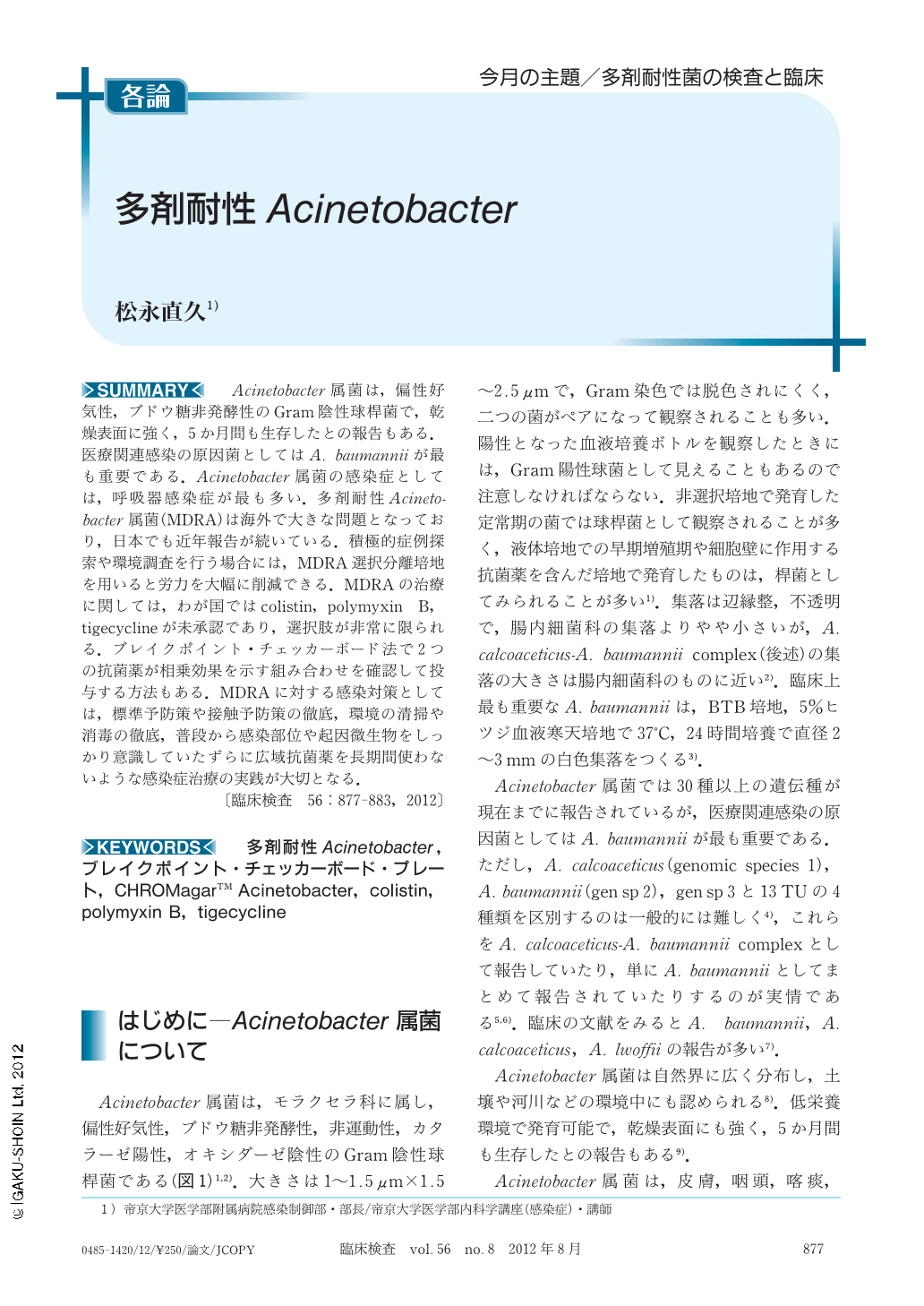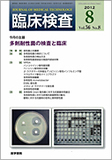Japanese
English
- 有料閲覧
- Abstract 文献概要
- 1ページ目 Look Inside
- 参考文献 Reference
Acinetobacter属菌は,偏性好気性,ブドウ糖非発酵性のGram陰性球桿菌で,乾燥表面に強く,5か月間も生存したとの報告もある.医療関連感染の原因菌としてはA. baumanniiが最も重要である.Acinetobacter属菌の感染症としては,呼吸器感染症が最も多い.多剤耐性Acinetobacter属菌(MDRA)は海外で大きな問題となっており,日本でも近年報告が続いている.積極的症例探索や環境調査を行う場合には,MDRA選択分離培地を用いると労力を大幅に削減できる.MDRAの治療に関しては,わが国ではcolistin,polymyxin B,tigecyclineが未承認であり,選択肢が非常に限られる.ブレイクポイント・チェッカーボード法で2つの抗菌薬が相乗効果を示す組み合わせを確認して投与する方法もある.MDRAに対する感染対策としては,標準予防策や接触予防策の徹底,環境の清掃や消毒の徹底,普段から感染部位や起因微生物をしっかり意識していたずらに広域抗菌薬を長期間使わないような感染症治療の実践が大切となる.
Acinetobacter species are strictly aerobic, non-fermentative gram-negative rods, which can survive for months on dry surfaces. A. baumannii is the most important genomic species among Acinetobacter species as an etiology of health care-associated infections. The most common Acinetobacter infections are respiratory infections. MDRA (multidrug-resistant Acinetobacter spp) is a rapidly emerging pathogen in the health care setting worldwide and cases of MDRA have been reported in Japan recently as well. A selective medium for the isolation of MDRA would be an effective tool for active surveillance cultures and environmental cultures. Treatment options for MDRA infections in Japan are very limited, because colistin, polymyxin B, or tigecycline is not approved. Break-point Checkerboard Plate may help to infer effective antibiotic combinations. Keys to control MDRA are high levels of compliance with standard and contact precautions, appropriate cleaning and disinfection of the environment, and judicious antimicrobial use.

Copyright © 2012, Igaku-Shoin Ltd. All rights reserved.


